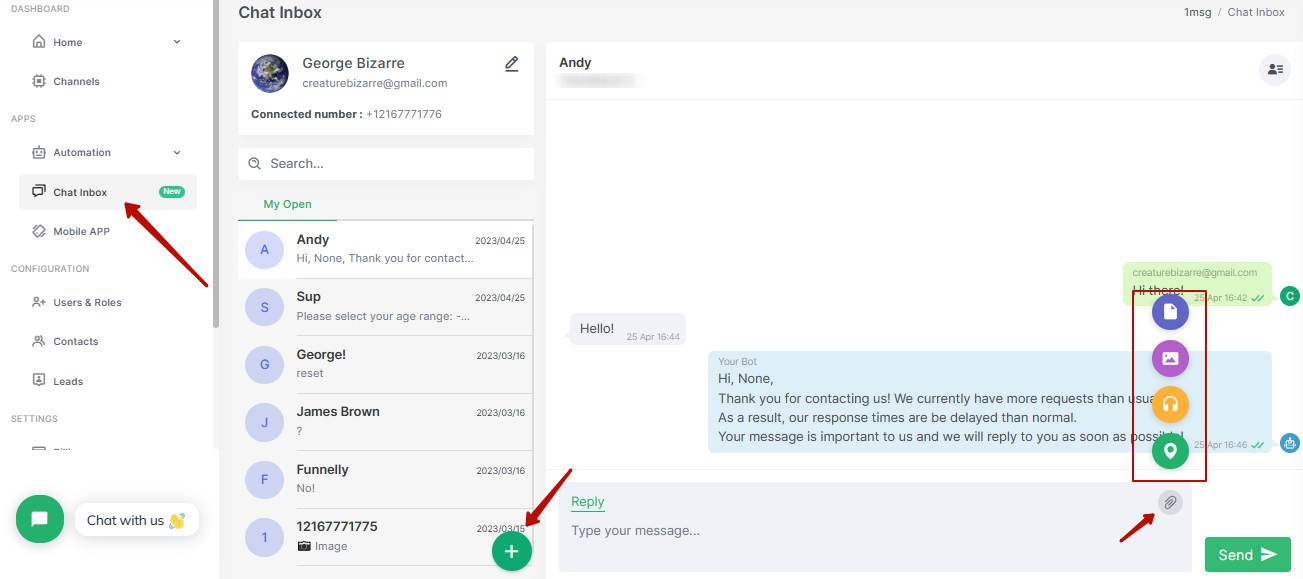Mastering the Art of Customer Service: 9 Essential Chat Etiquette Tips

The advent of digital communication platforms has revolutionized the way businesses connect with customers. One of the most prevalent channels in recent years is web chat - it's convenient, immediate, and accessible. Platforms like WhatsApp Web Chat and the WhatsApp Business Inbox have become integral tools for modern customer service. However, with this shift, a new set of rules has emerged: chat etiquette.
What is chat etiquette meaning, you may ask? Also, as 'atticates spelling', it is a set of social norms and expectations that guide online conversations, ensuring they are respectful, efficient, and effective. This article will explore the meaning of chat etiquette and provide nine critical tips for achieving best-in-class customer service.
The Significance of Chat Etiquette
Chat etiquette constitutes a set of guidelines that uphold the positive ambience of online dialogues and professionally address support issues. It's crucial for support agents to adhere to these rules to offer excellent experiences via chat-based channels.

Chat etiquette lays out how agents should conduct conversations with customers, focusing on aspects like proper grammar usage, setting expectations, demonstrating empathy, and delivering quick responses. Each business is unique, and the suggestions provided here should act as a springboard to craft a more customized chat etiquette framework that aligns with your specific business needs.
Why Does Chat Etiquette Matter for Customer Experience (CX)?
Our research indicates that 72% of consumers anticipate instant solutions when they reach out to customer service. Chat-based channels, due to their immediate nature, provide a golden opportunity for brands to meet this expectation. In the journey of fostering customer loyalty, every interaction counts, and chat etiquette plays a pivotal role in cultivating customer relationships that promote brand advocacy and minimize churn.
Chat enables CX teams to increase their efficiency and effectiveness as agents can juggle and address multiple queries concurrently. However, the mode of communication via chat differs significantly from voice conversations due to the absence of vocal cues, tone variations, and conversational rhythm.
These distinctions can pose challenges that your organization's CX leadership should anticipate and tackle by providing chat etiquette guidelines. Such protocols can assist support agents in steering these conversations effectively. Chat etiquette smoothens support interactions, eliminating potential friction between agents and customers. For chat-based dialogues, a seamless exchange of information between the agent and customer is paramount.
Defining a clear chat etiquette framework can aid in ensuring that your customer service team communicates in a manner that leaves a lasting positive impression. Here, we present our top seven tips to utilize chat etiquette for delivering best-in-class customer service.

9 rules of chat etiquette that will make your communication with customers top-notch
- Be Prompt: The essence of chat-based customer service lies in its immediacy. Unlike email, customers expect real-time responses. Strive to reply within a few seconds to a minute. Anything longer might make the customer feel ignored.
- Maintain Professionalism: Even though chat platforms like WhatsApp are also used for personal communication, it's crucial to maintain professionalism when using WhatsApp for business communication. Use formal language, avoid slang and emojis (unless it matches your brand's tone), and always address the customer politely.
- Tone of Voice: The tone of voice customers encounter during their interaction greatly influences their perception of your business. Strive for a friendly, empathetic, and positive tone. However, it's equally important to mirror the customer's tone – if they're formal, stay formal; if they're more relaxed, you can be too.
- Clear Communication: Make sure your responses are concise and easy to understand. Avoid using complex jargon or overly technical language. Remember, the ultimate goal is to resolve the customer's issue, not to confuse them further.
- Active Listening: This involves reading the customer's messages carefully, responding to their concerns accurately, and asking clarifying questions when necessary. It shows that you value their input and are committed to providing a solution.
- Personalization: Use the customer's name in your conversation. It makes the interaction more personal and shows the customer that they're not just another ticket number.
- Avoid Long Periods of Silence: If a query requires more time to resolve, inform the customer rather than leaving them waiting. Regular updates, even if it's just to say you're still working on the issue, can keep the customer reassured.
- Proactive Assistance: If a customer is struggling with an issue, don't wait for them to ask for help. Proactively offer assistance and guidance, demonstrating your commitment to their satisfaction.
- End on a Positive Note: Conclude the conversation by asking if there's anything else the customer needs help with. Thank them for their time and patience, and ensure they're satisfied with the resolution.
Remember, the ultimate purpose of chat etiquette is to ensure a smooth, positive interaction that leaves the customer feeling valued and satisfied. By incorporating these customer service tips into your chat etiquette, you can provide a best-in-class customer service chat etiquette experience that builds strong, lasting relationships with your customers.
Automation of communication taking into account the requirements of etiquette
You might think that the requirements of etiquette apply only to live communication with customers, it's partly true, but when dealing with large volumes of incoming calls can not do without automation tools such as chatbots and automatic responses. So, we offer to use chatbot constructor, which will help you to realize a scenario of communication with customers of any complexity.

Аnd AI functions like keyword recognition will help you to determine the mood of the client and adjust to it.

In other words, you'll be able to create a chatbot that can maintain a high level of communication and adhere to the rules of etiquette that we discussed above.
Of course, you'll also need the ability to quickly switch between the bot and the bot to intercept the communication if the client requests to speak to an operator or the bot is unable to handle the client's request. For this, there is Shared Team Inbox Chat, which will help you switch between WhatsApp automation and operators. You can connect an unlimited number of operators to this Chat Box.

Also read our other articles that will help you set up a chatbot, taking into account the important princes of communication with customers: 10 Positive Phrases, Words, and Expressions of Sympathy for Customer Service, 10 Great Substitutes for Sorry for the Inconvenience in WhatsApp Correspondence and 8 Tips to Improve Customer Service, The Art of Gratitude: Thanking Customers for Their Purchases and 10 Ways to Do It on WhatsApp.
Conclusion
Chat etiquette, or 'etiquette' as it's correctly spelled, is a critical aspect of modern customer service. As businesses increasingly turn to platforms like WhatsApp Web Chat and WhatsApp Business Inbox to connect with customers, mastering the art of chat etiquette is more important than ever. It's not just about responding to messages—it's about creating meaningful, positive interactions that leave your customers feeling valued and heard.

